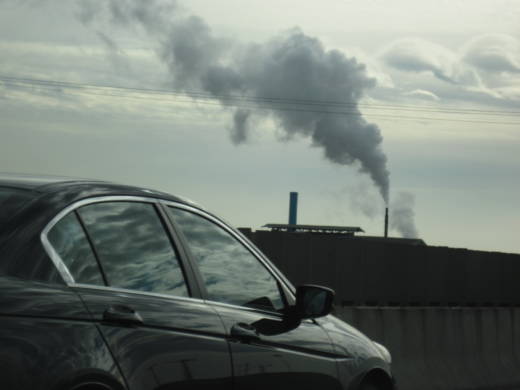Formally, the broad goal set in Paris was to halt warming since pre-industrial times at 2 degrees Celsius. But more recently, scientists have advised that tightening the screws to 1.5 C would better safeguard humanity against the worst climate impacts, such as extreme weather events and rising seas.
The GCP studies concluded that this year the world would spew 40.9 billion tons of carbon dioxide, up from 39.8 billion tons last year. The margin of error is about one percentage point on either side.
The Global Carbon Project uses government and industry reports to come up with final emission figures for 2017 and projections for 2018 based on the four biggest polluters: China, the United States, India and the European Union.
The U.S., which had been steadily decreasing its carbon pollution, showed a significant rise in emissions — up 2.5 percent — for the first time since 2013. China, the globe’s biggest carbon emitter, saw its largest increase since 2011: 4.6 percent.
California, thanks to aggressive regulation and incentives, is running several years ahead of schedule toward its 2020 goal of reducing emissions to 1990 levels. But California only accounts for about 1 percent of worldwide emissions.
Study lead author Corinne Le Quere, a climate change researcher at the University of East Anglia in England, said the increase is a surprising “reality check” after a few years of smaller emission increases. But she also doesn’t think the world will return to the even larger increases seen from 2003 to 2008. She believes unusual factors are at play this year.
For the U.S., it was a combination of a hot summer and cold winter that required more electricity use for heating and cooling. For China, it was an economic stimulus that pushed coal-powered manufacturing, Le Quere said.
John Reilly, co-director of MIT’s Joint Program on the Science and Policy of Global Change, said the results aren’t too surprising because fossil fuels still account for 81 percent of the world’s energy use. The burning of coal, oil and gas release carbon dioxide, which warms the Earth’s atmosphere and oceans. Reilly, who wasn’t part of the study, praised it as impressive.
Global Carbon Project chairman Rob Jackson, a Stanford University climate scientist, said he was discouraged.
China increased its emissions to 11.4 billion tons, while the U.S. jumped to a shade under 6 billion tons. The European Union spewed 3.9 billion tons and India soared to 2.9 billion tons. Overall, the world is spewing about 1,300 tons (1,175 metric tons) of carbon dioxide into the air every second.
Burning of coal — the biggest carbon emitter — is rising. And while countries are using more renewable fuels and trying to reduce carbon from electricity production, emissions from cars and planes are steadily increasing, Le Quere said.
Global carbon dioxide emissions have increased 55 percent in the last 20 years, the calculations show. At the same time, Earth has warmed on average about two-thirds of a degree (0.38 degrees Celsius), according to the U.S. National Oceanic and Atmospheric Administration.
KQED Science Editor Craig Miller contributed to this post.

